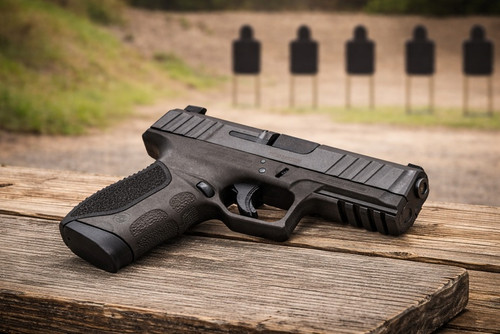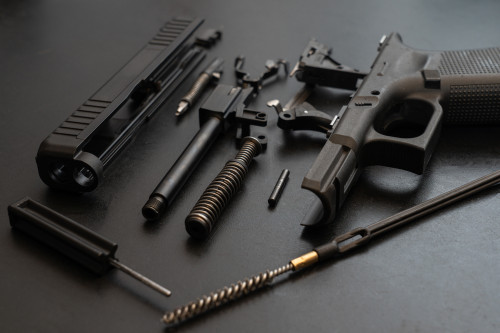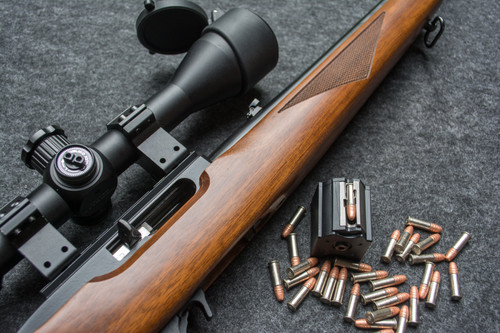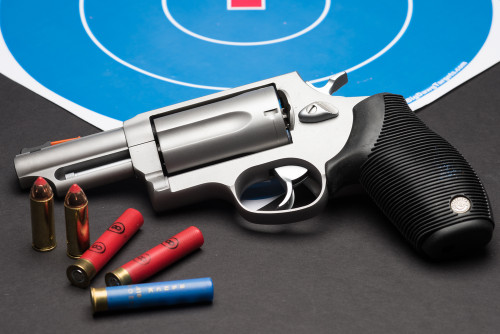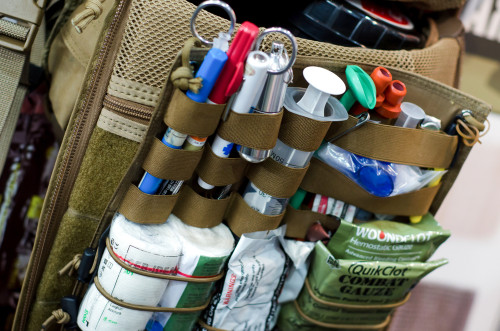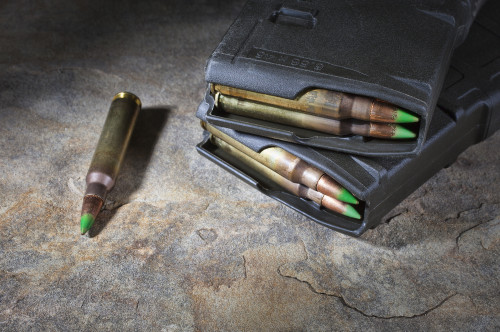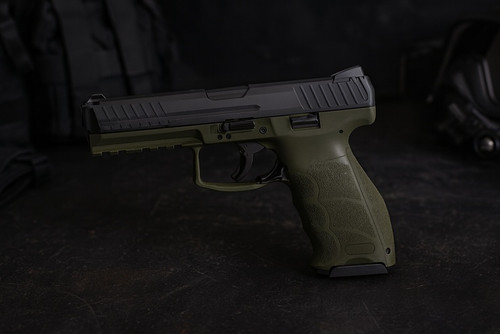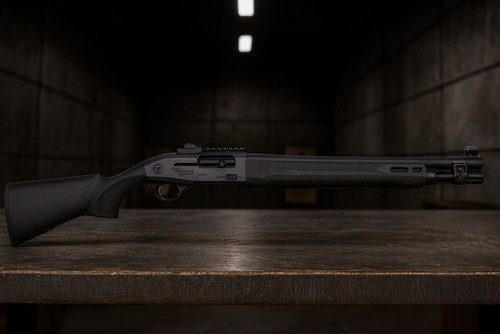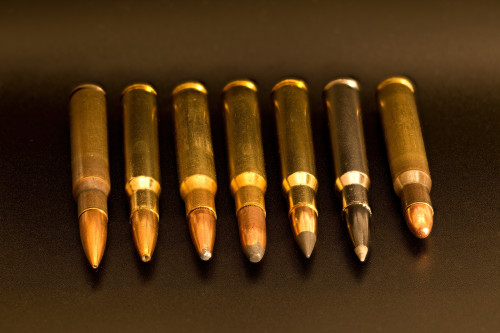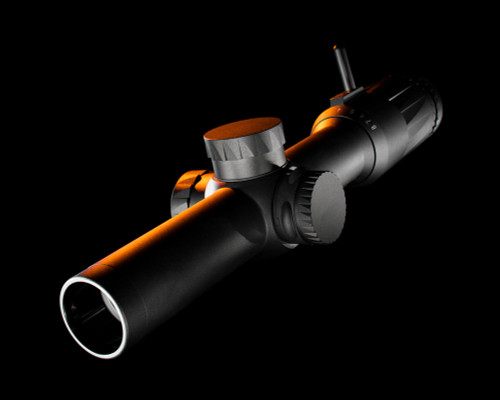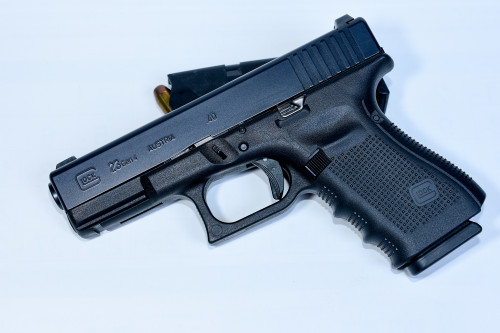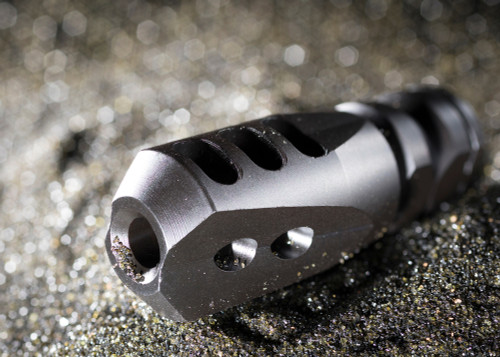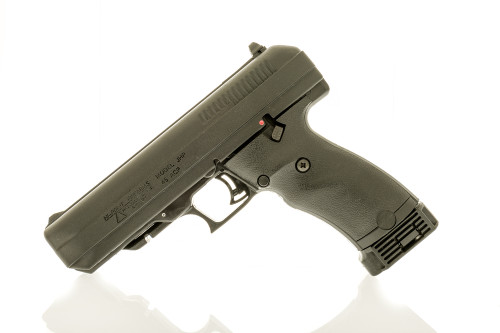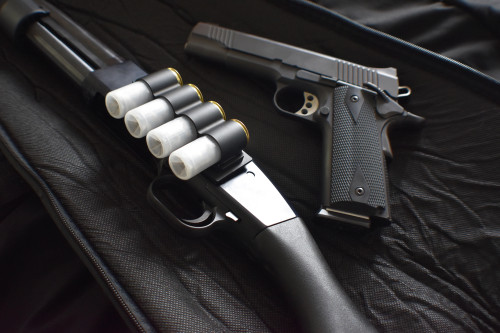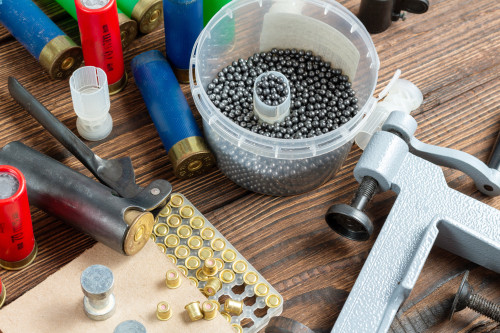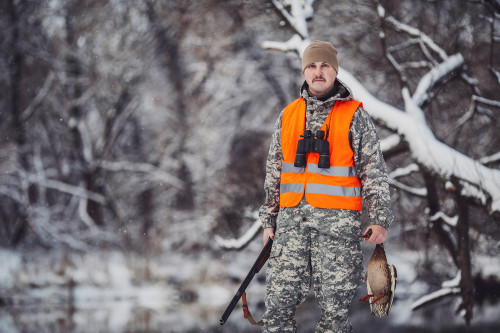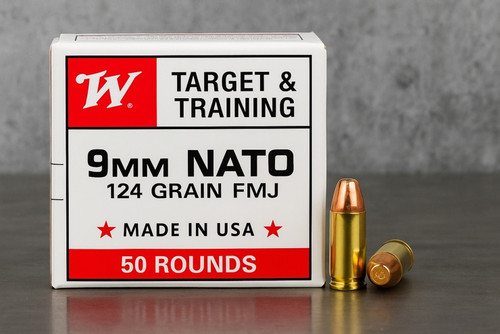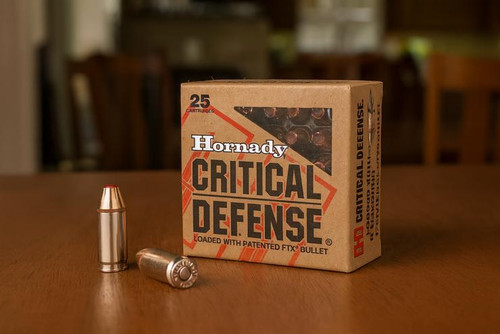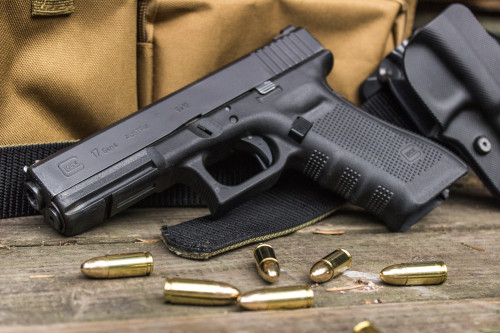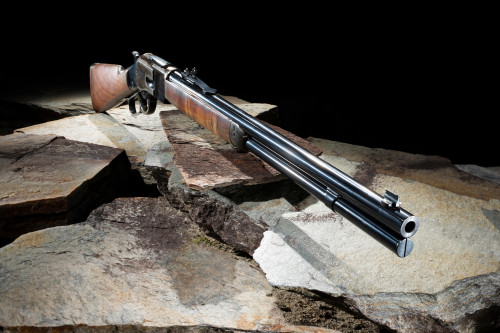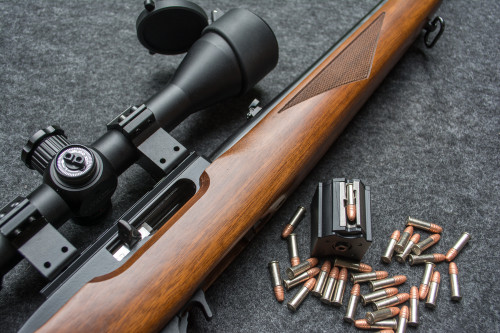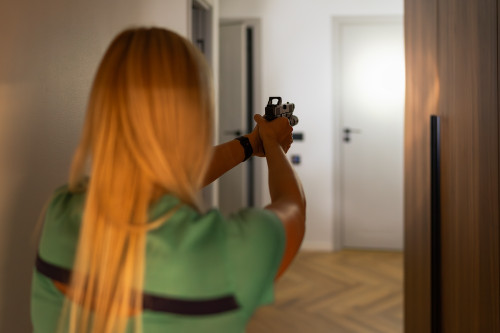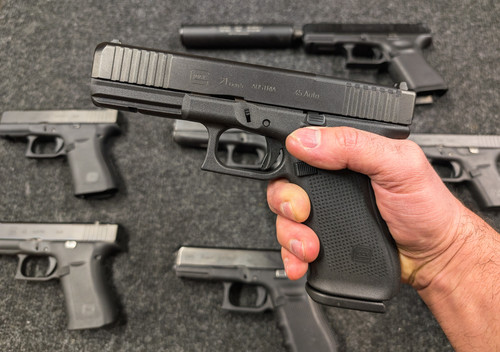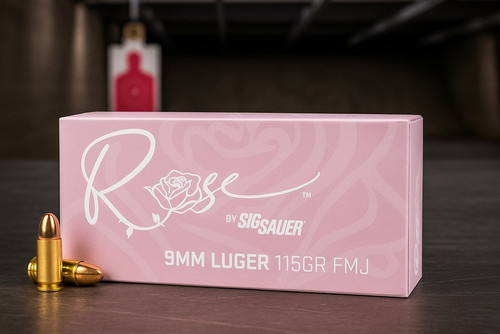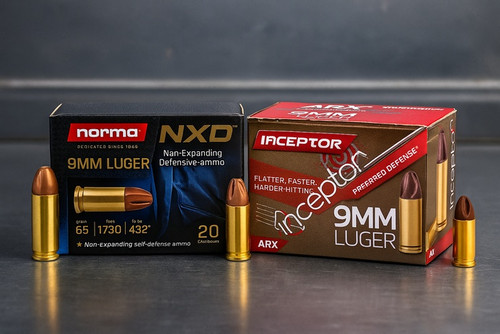Science, technology, and culture have made great strides toward empowering disabled people to do more with their bodies. Prosthetics, mobility devices, sensory aids, medical procedures, and even cutting-edge technologies such as Elon Musk’s Neuralink are making the lives of disabled people easier and more fulfilling.
The disabled community has long engaged in sports and recreational activities, but many today also participate in shooting sports. Disabled shooters (with the appropriate waivers) can participate in the Paralympics, IPSC, and other professional shooting organizations. Veteran-focused competitions exist as well, such as the Warrior Games and Valor Games.
While firearms present some unique challenges for people with disabilities, adaptive shooting opens the door for even more people to use firearms — both for sport and self-defense. Through adaptive shooting techniques and accessories, firearms can be “the great equalizer” for those in the disabled community.
If you have a disability and are interested in becoming a better shooter or competing, you have more options than ever before. Let’s look at how adaptive shooting works and how you can use the techniques, technology, and support available to take advantage of your Second Amendment right.
What Is Adaptive Shooting?
The term “adaptive shooting” is used to describe the family of techniques, training, and equipment to assist disabled firearms users in competition, recreation, hunting, and self-defense.
For as long as firearms have been around, there have been disabled users of firearms. For centuries, those who were disabled in war or because of genetic factors had to “make do” with whatever firearm they could handle. Otherwise, they had to improvise techniques and equipment to use a firearm at all.
Some primitive methods of adaptive shooting (shooting with the weak hand if the dominant hand was injured) were simple work-arounds. Other methods (like using a string to operate a trigger) were ineffective and sometimes dangerous. In many cases, a severely disabled shooter could lose control of the firearm, putting themselves and innocent bystanders at risk.
A severely disabled shooter could lose control of the firearm, putting themselves and innocent bystanders at risk. This meant that many who enjoyed shooting or were required to operate a firearm for a job were forced to give it up entirely.
Today, the field of adaptive shooting has grown, with more specialized gear on the market to assist disabled shooters. Devices such as electronic triggers, video-assisted firearm optics, specialized mounting systems for wheelchair-bound shooters, and arm braces are now more prevalent.
The Adaptive Shooting Community
Today’s adaptive shooting movement offers multiple resources:
- Online Communities - Because of the internet, the adaptive shooting community has grown exponentially. Web forums like Target Talk and Long Range Shooting offer environments for disabled shooters to connect and share ideas about gear and techniques while supporting one another in their shooting goals.
- Technological Advancements - Many manufacturers have also taken notice of the community’s rapid growth. Dedicated companies like Be Adaptive now offer products such as the Omega series of video-assisted rifle sights, or the ingenious Ransom Assisted Trigger (RAT), which allows a quadriplegic shooter to use their breathing to actuate a firearm trigger.
- Training Programs - Since the challenges of operating a firearm safely are different for adaptive shooters, major shooting organizations such as the National Rifle Association have established formalized training and certification programs for adaptive shooting.
The Law and Adaptive Shooting
The Second Amendment is for every U.S. citizen. Unique to our nation, the Amendment recognizes the ability to keep and bear arms as a pre-existing right (rather than a government-granted privilege). People with disabilities have the same right, even if they must operate firearms differently than a non-disabled person.
However, as accommodating as the firearms community is towards disabled shooters, the law often prevents them from exercising their right to keep and bear arms.
Firearm Carry Permit Laws
In states that still issue firearm carry permits, a training component is often required to obtain a permit. However, the law itself does not explicitly recognize the existence of disabled shooters, and these training courses almost never make adaptations for people with disabilities.
Thankfully, most state-level gun rights organizations will gladly be of legal assistance to disabled shooters trying to obtain a carry permit. Also, as of 2023, 27 states no longer require a permit to carry a firearm in public. While this doesn’t eliminate the need for qualified training, it lessens the bureaucratic and legal burden on everyone, especially disabled shooters. Someone trained in adaptive shooting techniques can concentrate on honing their skills, rather than worrying about the permit process.
Legal Battles Over Adaptive Technology
Invented in 2012 by Alex Bosco, the pistol arm brace has been the subject of a heated legal battle at the federal level. Bosco invented the device after seeing a disabled veteran friend struggle with a large AR-style pistol.
The brace straps the firearm to the user’s arm, stabilizing the weapon more effectively. As it happens, the device attaches to the back of a firearm (usually to the buffer tube in the case of an AR-style pistol). Superficially, this makes the arm brace resemble a rifle stock, which is the primary issue.
Even though the pistol arm brace is not a rifle stock, some users need to shoulder their large-format pistols as if they were using a rifle. According to the National Firearms Act of 1934, any weapon with a stock is considered a rifle. This law also demands a $200 tax and registration for any rifle with a barrel length shorter than 16 inches. To make matters worse, President Biden signed an executive order in 2022 modifying the legal definition of “rifle” to include pistols with arm braces. The order contained no grandfather clause, and demanded that all existing pistols with braces either be registered or destroyed. This means that everyone who uses this adaptive shooting device is subject to the tax requirement.
Of course, the firearms community took issue, with organizations such as the Firearms Policy Coalition and the NRA immediately filing lawsuits at the federal level. The leading case now is Mock v. Garland, where an injunction is currently in effect as of 2023. This injunction (and similar ones) state that any pistol brace owner who is a member of the Firearms Policy Coalition, the NRA, or the Gun Owners Of America does not have to comply with the registration requirement.
Still, this is a legal gray area. Pistol arm braces should be used cautiously until the case is resolved.
Why This Is a Problem
The current law regarding pistol arm-braced firearms is an obstacle to disabled shooters for a few reasons:
- First and foremost would be the tax on such an item. Disabled people often incur many expenses which insurance providers won’t cover. A $200 tax on top of what the firearm and brace costs could prove even more burdensome.
- Secondly, the National Firearms Act red tape can take months to untangle. During this time, the assembled firearm cannot be in the possession of the end user.
- Thirdly, paying the tax and registering the firearm is likely to be unnecessary as the current injunction was granted on the likelihood of success of the overall case in favor of the plaintiff. In plain English, this means that the rule is unenforced as of 2023 — since the Fifth Circuit Court feels the plaintiffs (the good guys) will likely win the case.
Adaptive Shooting Using a Handgun
Whether for recreation, competition, or self-defense, shooters want to use a handgun safely and effectively. However, this can be a challenge for some people with disabilities. Here are a few ways adaptive shooting can overcome some common challenges:
Adaptive Trigger Pull
A modern Glock 19 9mm pistol has a trigger pull weight of 5.5 pounds. This could present a challenge to a disabled shooter with limited hand usage. Whether it’s an injury or a condition such as arthritis, 5.5 pounds of pull could be insurmountable by traditional means. Otherwise, the small surface area of a trigger may not be suitable for someone with limited dexterity or missing digits.
In this case, adaptive shooting techniques and equipment are of real benefit.
- Lighter Triggers - For pistols, lighter triggers available from companies like Apex, CMC, and Timney can bring the trigger pull down into the 2.2 pound range.
- Electronic triggers - The Digitrigger can also help with this, with a firing sequence initiated by the press of a button, which either uses an actuator to press the gun’s trigger or activates the pistol striker directly.
- Breath-Assisted Triggers - Even more next-level is the RAT Trigger from Ransom, which enables the user to use their own breath to operate a properly-mounted pistol.
Adaptive Grip and Aim
Safely holding a handgun is also paramount. Some adaptive shooters such as Hunter “Nubs” Cayll, who was born with no hands, use custom molded loops to hold the pistol, along with loops to enable the safe reloading of pistols and rifles.
Other methods include devices such as Be Adaptive’s LMPM, which allows a user to mount and (using additional Be Adaptive accessories) safely fire a modern semi-automatic pistol or classic revolver.
Handgun-specific devices have also been designed for the vision-impaired. Night sights on a pistol can help, along with more advanced systems like a red dot sight turned up to full brightness.
Adaptive Firearms Training
Equipment is only half of the equation. Knowledge is equally important. Adaptive shooters benefit immensely with personalized instruction from certified trainers. A qualified adaptive shooting trainer can customize their course to each person’s needs. Equipped and trained, the adaptive shooter can participate in competitive shooting, recreational shooting, and defensive shooting.
Competitive Shooting and the Disabled
Competitive shooting leagues were among the first in the firearms scene to recognize the potential of adaptive shooters, and the Paralympics has offered formal competitive shooting matches since the mid-1970s.
Veteran-Focused Competitions
Today, veteran-focused competitions like the Warrior Games and Valor Games have used adaptive shooting techniques by default due to the presence of many disabled veteran competitors. In addition, conventional shooting leagues such as the International Defensive Pistol Association (IDPA) and the United States Practical Shooting Association (USPSA) have made outreach to the disabled community their priority.
NRA and Other Organizations
The National Rifle Association has taken a different approach. Matches organized by the NRA are open to all who can meet the standards for the given event. Adaptive shooters are welcome, provided they complete a competition waiver process detailing their adaptive shooting styles, which the judges will account for in the scoring process.
Similarly, the IDPA has offered the Honored American Veterans Afield organization their Learning To Shoot Again program, which promotes and trains disabled veterans in adaptive shooting techniques.
3-Gun Competitions
Another remarkable organization is Battle Buddy 3 Gun, which unites able-bodied and disabled shooters in everyone’s favorite shooting sport: 3 Gun.
In 3 Gun, a competitor runs a course using a pistol, rifle, and a shotgun to achieve scores on a dynamic range. Battle Buddy 3 Gun ups the ante by pairing able-bodied and disabled shooters. Both work as a unit, completing an intensive course of fire in competition with other teams. Recognizing that disabled people often work with able-bodied colleagues, “BB3G” has built a unique community of shooting enthusiasts and competitors.
Adaptive Shooting Techniques for Precision Shooting
Adaptive shooters can often excel in the field of precision and long-range shooting. Precision target shooting at any range emphasizes careful technique, analysis, and planning, rather than strength and physicality. If you can press a trigger (and perhaps do a little math), you can participate in precision shooting.
For example, many target shooting competitions already allow powerful optics and magnification systems. Adaptive shooters who use this equipment can easily participate.
Additionally, target shooting’s emphasis on precision means that shooters (disabled or otherwise) can use alternative shooting positions in matches. For example, someone who cannot use their legs can shoot from a bench or prone position just like an able-bodied shooter. A wheelchair-bound shooter’s default “stance” is functionally similar to certain sitting and kneeling positions as well. Firearms tuned for precision shooting usually employ light trigger actions, so that even someone with limited grip strength can excel.
Adaptive Shooting for Self-Defense
Many able-bodied criminals have no shame in harming or taking advantage of people with disabilities, thinking them easy marks for robbery or other violent crimes. In this case, the firearm is truly the great equalizer. A disabled person with a weapon and training is the perfect embodiment of the old saying “God created man; Sam Colt made them equal.”
Adaptive Shooting Equipment for Self Defense
Adaptive shooters need to consider all factors, including speed, before relying on a firearm for self-defense. When an attacker wants your money or your life, they have no reason to slow down. If you’ve ever been in a situation like this, you know adrenaline can affect your reaction time, even if you aren’t disabled.
For people with disabilities, even small movements can take time to complete, especially under duress. When someone approaches you and wants your money on the street, you don’t have time to set up a special piece of equipment. You need a solution already built into your training routine that allows you to take immediate action.
Yet again, adaptive shooters rise to the occasion with innovative gear and techniques. Some examples of adaptive self-defense equipment include:
- Loading Assistants - Merely loading a firearm magazine can be a challenge for people with some disabilities. A simple device such as the Israeli-made MagLULA loader makes the process easier by attaching directly to an empty magazine. From there, the user places a round in the device, and squeezes it to press the cartridge into the magazine.
- Slide Rackers - Some wheelchair-bound shooters prefer a device called the Handi-Racker, a solid chunk of plastic that allows for one-handed racking. Some shooters opt for a classic revolver, which can be armed and fired with one hand. While this does reduce round count, it’s better than having no defensive weapon at all.
- Concealed Carry Gear - For some shooters with disabilities, carrying a defensive weapon on a daily basis is also a challenge, and there are definitely some wrong ways to do it. Mounting a holster to a wheelchair, for example, isn’t recommended. Instead, one could position a conventional holster on a more forward position on the leg (in states where open carry is permitted) or in a firearm-optimized fanny pack around the waist.
- Home Defense - For home defense, you may prefer a rifle over a handgun. However, if you don’t have full use of both hands, using a rifle can be difficult without some sort of adaptive technique. Luckily, dedicated mounting systems from Be Adaptive can accommodate modern defensive rifles like an AR-15-style weapon. Beyond that, the team at Blackwater (the private military contracting firm) have designed an AR-15-style rifle called the Iron Horse, which uses a thumb-button trigger rather than a conventional pull trigger. Initially intended to reduce the inaccuracies inherent in a pull trigger, the Ironhorse system can benefit those with limited finger usage as well.
Adaptive Shooting Training and Law Enforcement
Adaptive shooting techniques for self-defense originated in the law enforcement community. An officer can be seriously wounded in a gunfight and left with limited mobility or use of limbs. In this situation, the officer may need to employ adaptive shooting techniques to save their life. Adaptive shooting techniques for self-defense evolved from the “defensive shooting while injured” training law enforcement officers can participate in.
For example, they may lose use of their dominant hand and have to shoot with their weak hand, requiring adaptations in trigger manipulation. Another challenge would be executing a one-handed magazine change and slide rack. One technique favored by many injured law enforcement officers is to use a stationary or solid object to rack the slide. Using a door frame or even your boot to press against the sights on a pistol and pushing the slide back is a good way to chamber a round with one hand.
Also, Range Safety Officers (RSOs) play an important role for law enforcement and citizen adaptive shooting training. Often these are veterans with disabilities of their own who can offer insights. They should also be certified by a major training body (such as the training wing of the NRA) in teaching adaptive shooting.
Adaptive Shooting: The Great Equalizer
The field of adaptive shooting has evolved through tireless innovation. With the development of quality equipment and training techniques, those in the disabled community can now participate fully in shooting both for sport and self defense.
Adaptive shooting also gives the disabled community more visibility and equal standing with able-bodied people. With “2A” personalities such as Omar “Crispy” Avila, Hunter Cayll, and many other adaptive shooters garnering millions of views and likes on social media, the future for adaptive shooting and its participants is bright. The Second Amendment is for everyone, after all.
But to make the best of any shooting experience, you need a solid supply of ammunition, tactical gear, and insightful training. At Pro Armory, we offer all three. Our team of veterans is dedicated to helping all shooters achieve their shooting goals — however that looks for you.






